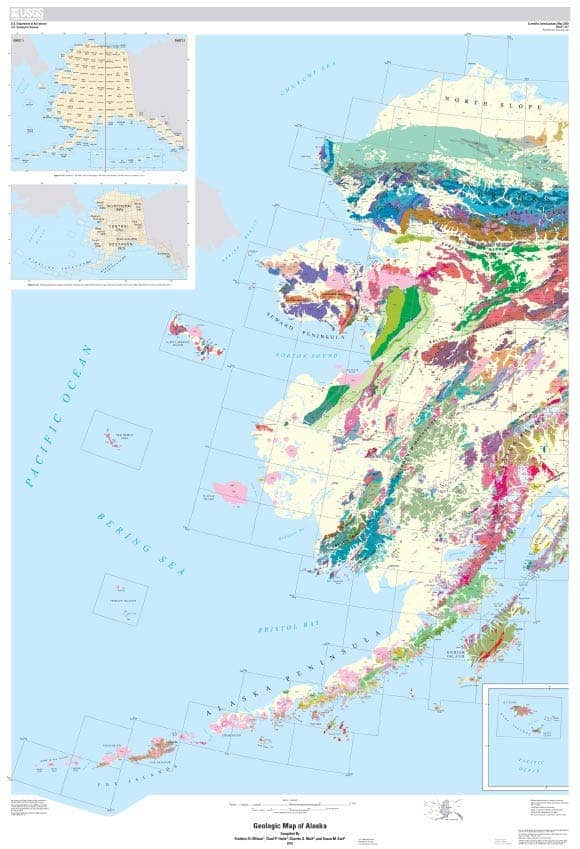Scientists working at the United States Geological Survey (USGS) have released the first ever digital geologic map of Alaska. This map (Part 1 – the western part of Alaska and the Aleutian Islands, and Part 2 – the eastern part of Alaska and the list of map units) is a completely new compilation.
“Covering the entire state of Alaska, it reflects more than a century of work by a host of geologists and almost two decades of compilation work,” the scientists said.
Alaska is easily the largest state in the US, but it’s one of the least populous in the country. Its geology is also one of the most complex in the US and over 750 scientific references were used to digitize this map, some as old as the early 20th century. Scientists have worked on this one for over 20 years, but the results are finally in and they’re definitely worth it.
“This map is the continuation of a long line of USGS maps of Alaska, reflecting ever increasing knowledge of the geology of the state,” said USGS research geologist Dr Frederic Wilson, who is the lead author of the new map.
Alaska is also not only one of the richer states in natural resources, but it’s also one of the more hazardous.
“The data contained in this digital map will be invaluable. It is a great resource and especially enhances the capacity for science-informed decision making for natural and cultural resources, interpretive programs, and visitor safety,” added National Park Service Director Jonathan B. Jarvis.
“A better understanding of Alaska’s geology is vital to our state’s future,” said Sen. Lisa Murkowski, R-Alaska. “This new map makes a real contribution to our state, from the scientific work it embodies to the responsible resource production it may facilitate. Projects like this one underscore the important mission of the USGS, and I’m thankful to them for completing it.”
All in all it’s a remarkable contribution










